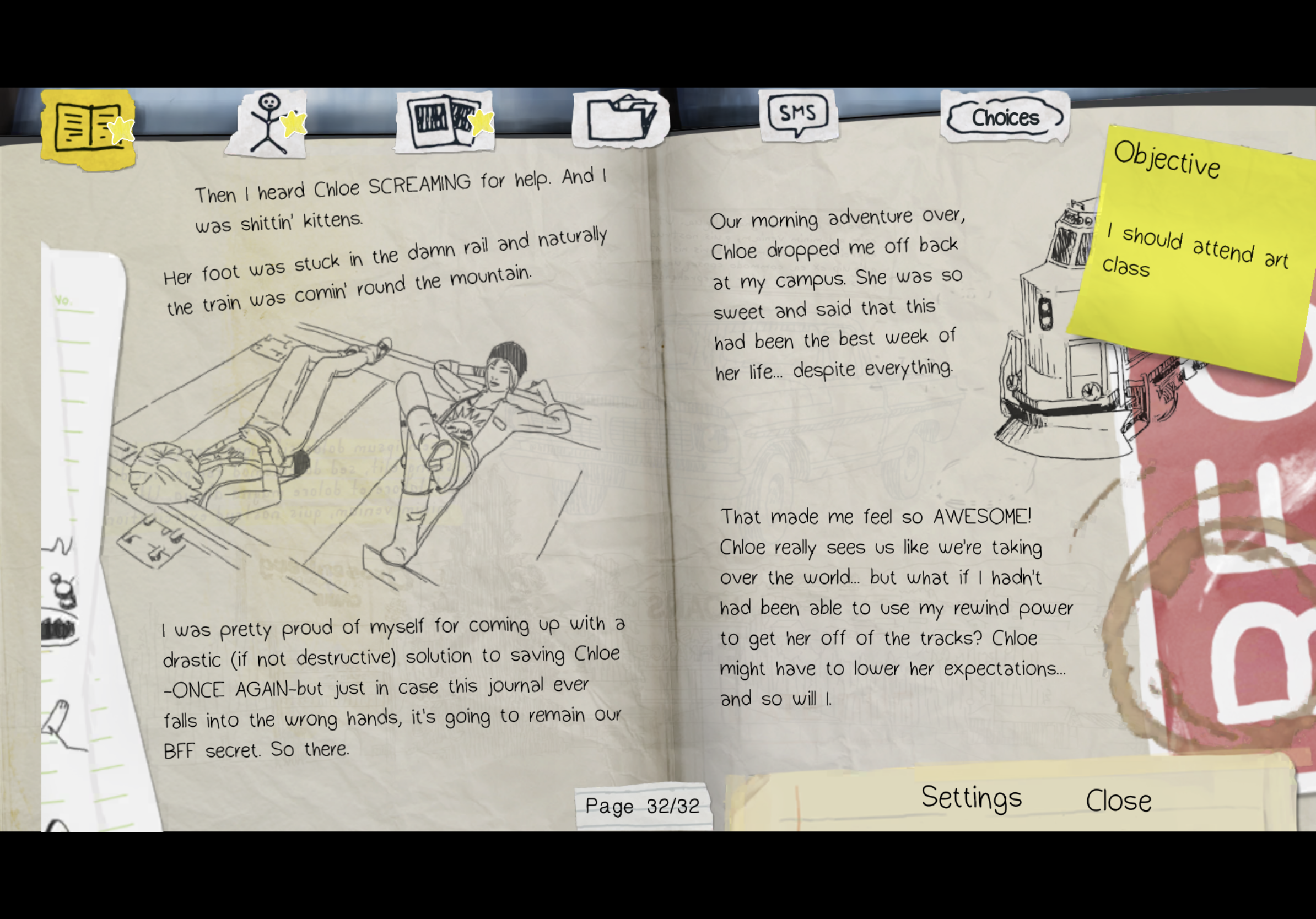 this critical play I want to write about Life is Strange because I think it is such a great embodiment of feminism in video games topic. I think it is a really good game that can be analyzed through many lenses (walking sim, mechanisms, storytelling, puzzles, suspense, etc). But in this critical play, I want to revisit and only focus on the aspects that make it a really good game that incorporates feminism. This game is developed by Dontnod Entertainment, released on all digital platforms, and has a wide range of audiences including teenagers and adults of all gender identities. I think it is s good attempt to bring in more female audiences to video games since it is a serious game, but not as violent and male-oriented as the others.
this critical play I want to write about Life is Strange because I think it is such a great embodiment of feminism in video games topic. I think it is a really good game that can be analyzed through many lenses (walking sim, mechanisms, storytelling, puzzles, suspense, etc). But in this critical play, I want to revisit and only focus on the aspects that make it a really good game that incorporates feminism. This game is developed by Dontnod Entertainment, released on all digital platforms, and has a wide range of audiences including teenagers and adults of all gender identities. I think it is s good attempt to bring in more female audiences to video games since it is a serious game, but not as violent and male-oriented as the others.
I think there are a couple of key aspects of the reading that the game answered to. 1) Inviting females to play a serious game like Life is Strange. In the reading, we talked about how a lot of female audiences play casual games, while the majority of the “serious” games are played for male audiences. I think Life is Strange is a serious game and it invites more females to play the game and maybe then consider themselves gamers. I think doing so will cultivate a better culture than before where serious games are associated with violence and a large male fan base. 2) Female representation. A lot of the female characters are over-sexualized across all games to attract a male audience. In this game, the image of the protagonist is accurate and not over-sexualized as in some of the other games. The protagonist is just a normal teenage girl and throughout the game, the player makes decisions with her and gets to experience her dilemmas. 3) Most games enforce a patriarchal structure. But I think that Life is Strange tells a pretty good feminist story. Yes, there are some scenes in the game, especially with the security guard, the dad, and Rachel’s friend that portrays an abusive and violent scene with the protagonists. But what really matters is how they choose to deal with that. The protagonists handled the situation really well and showed them that they are not to be messed with. I think this also ties to the idea that the story should show the agencies that the female characters have. I think Life is Strange does a pretty good job in this area because it showed that a good game does not need a male protagonist to tell the story.
Now I want to show how we can incorporate more feminist values into the formal elements to make the game more fun to play. One thing that I think can be improved open is to maybe explore more of the female characters around the protagonist in the game. For example, I know that the protagonist has a cell phone and it is one of the mechanisms/procedures of the game to view text messages there to facilitate story telling. What if we add the protagonist’s guardian in there and show another layer of relationship to the protagonist? An example could be the protagonist has an aunt that serves as a guiding figure. The protagonist could have arguments with them but eventually learns their struggles and realizations to act with more agencies in this world. Maybe there should be a mechanism that allows the protagonist to converse with the aunt for “moral guidelines”, and maybe the aunt’s experiences growing up without the agency that she hoped she had. In this way, we can include more perspectives and add more layers and dilemmas to the narratives and make the game more complex and “fun” in that way.




